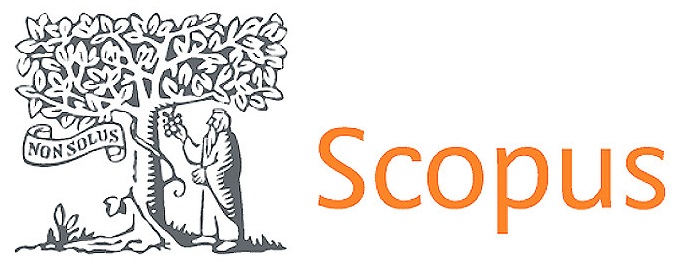Development of an Android-assisted STEAM-based Project Based Learning Model in Informatics Subjects at Vocational High Schools
DOI:
https://doi.org/10.56294/saludcyt20251826Keywords:
4C Soft Skills, 21st Century, ADDIE, Android, Industrial Revolution 4.0, Project-Based Learning, SMK, STEAMAbstract
This research aims to develop a STEAM-based Project-Based Learning (PjBL) model (Science, Technology, Engineering, Arts, and Mathematics) assisted by Android in Informatics subjects at SMK. This model was developed using the ADDIE (Analysis, Design, Development, Implementation, and Evaluation) approach to ensure its effectiveness and usefulness in improving student competence. With the integration of technology and a project-based approach, this model is expected to improve students' skills in problem solving, creative thinking, technical skills, and soft skills. 21st-century learning demands a learning model that is able to develop student competencies, especially in the aspects of critical thinking, creativity, communication, and collaboration (4C). The challenges of the industrial revolution 4.0 also require vocational education, especially in SMK, to produce graduates who are work-ready and able to adapt to technological developments. However, the low absorption rate of SMK graduates in the industrial world indicates a competency gap that must be addressed. Therefore, an innovative learning model is needed that can integrate 21st-century skills with industry needs. The results of this study are developing a STEAM-based project-based learning model. It has validity, practicality, and effectiveness that has been tested so that it is feasible to use in informatics subjects in vocational schools. The implications of this research can improve student learning outcomes in terms of cognitive, affective, psychomotor, and improve student soft skills. Thus, this learning model can be an effective alternative in supporting Informatics learning in SMK to face the challenges of the digital era and industrial revolution 4.0.
References
1. Badan Pusat Stastitik - BPS (https://www.bps.go.id/id/statistics-table/2/MTE3OSMy/tingkat-pengangguran-terbuka-berdasarkan-tingkat-pendidikan.html diakses pada tanggal 3 September 2024).
2. Capraro, M. M., Capraro, R. M., & Morgan, J. R. (2018). STEM Project-Based Learning: An Integrated Science, Technology, Engineering, and Mathematics (STEM) Approach (2nd ed.). Springer.
3. CNBC INDOENSIA RESEARCH : https://www.cnbcindonesia.com/research/20240508113817-128-536658/lulusan-smk-paling-banyak-nganggur-pemerintah-kudu-piye, diakses pada tanggal 3 September 2024).
4. Dharma Surya dkk. (2013). Tantangan Guru SMK Abad 21. Jakarta : Direktorat Pembinaan PTK Dikmen Kementerian Pendidikan dan Kebudayaan RI.
5. Herro, D., Quigley, C., Andrews, J., & Delacruz, G. (2017). Deepening Teachers’ Understanding of STEAM Teaching Through a PBL Design Experience. Journal of STEM Education, 18(1), 55-64.
6. Honey, M., Pearson, G., & Schweingruber, H. (2014). STEM Integration in K-12 Education: Status, Prospects, and an Agenda for Research. National Academies Press.
7. Johnson, D. W., & Johnson, R. T. (1999). Learning together and alone: Cooperative, competitive, and individualistic learning. Allyn and Bacon.
8. Johnson, L., Adams Becker, S., Cummins, M., Estrada V., Freeman, A. (2019). NMC Horizon Report: 2019 Higher Education Edition. The New Media Consortium.
9. Jonassen, D. H., Lee, C. B., & Lui, C. S. (2015). Handbook of Research on Educational Communications and Technology. Springer.
10. Joubert, M., Pillay, A., & Sumsodhee, D. (2017). Technical and Vocational Education and Training in the 21st Century: New Roles and Challenges for Guidance and Counselling. Springer.
11. Laboy-Rush, D. (2010). Integrated STEM education through project-based learning. www.learning.com/stem/whitepaper/ integrated-STEM-through Project-based-Learning.
12. Ling, S. H., Ling, S. P. M., & Kuek, T. Y. (2018). Skills Mismatch of Technical and Vocational Education Graduates in the Malaysian Labour Market: Voices from Graduates and Employers. Asia Pacific Education Review, 19(4), 553–566.
13. Mamahit, J. A., Aloysius, D. C., & Suwono, H. (2020). Efektivitas Model Project-Based Learning Terintegrasi STEM (PjBL-STEM) terhadap Keterampilan Berpikir Kreatif Siswa Kelas X. Jurnal Pendidikan, 5(9), 1284–1289. http://journal.um.ac.id/index.php/jptpp/ DOI: https://doi.org/10.17977/jptpp.v5i9.14034
14. Maria Montessori, Ambiyar. (2023). Model Pembelajaran Konstruktivisme, hal 5 & 33. Depok: Rajawali Pers
15. Marzano, R. J., Heflebower, T., & Pickering, D. (2017). The New Art and Science of Teaching. Solution Tree Press.
16. Partnership for 21st Century Skills. (2007). Framework for 21st Century Learning. Washington, DC: Author.
17. Prosser & Quigley (1950). Vacational Education in a Democracy. USA: American Technical Society. Hal 215-232.
18. Rahardhian, A. (2022). Pengaruh Pembelajaran PjBL Berbasis STEM terhadap Kemampuan Berpikir Kritis Siswa pada Materi Listrik Dinamis. Jurnal Inovasi Penelitian Dan Pembelajaran Fisika, 3(1), 1–9. https://doi.org/10.26418/jippf.v3i1.50882 DOI: https://doi.org/10.26418/jippf.v3i1.50882
19. Said Thaha Ghafara, Junaidah.S., Ambiyar, Unung Verawardina. (2024). Model STEAM Project Based Learning Kurikulum Merdeka Belajar, hal 1-5. Padang: MRI Publisher.
20. Sudira, D. P. (2012). Filosofi dan Teori Pendidikan Vokasi dan Kejuruan (Teguh Setyawan (ed.)). UNY Press. hal. 16
21. Sugiyono, (2015). Metode Penelitian dan Pengembangan. Hal 38-39, Bandung: Alfabeta.
22. Thomas, J. W. (2000). A Review of Research on Project-Based Learning. Autodesk Foundation.
23. Ussher, B., Gibbes, C.: Vygotsky. 2002. Physical Education and Social Interaction. Journal of Physical Education New Zealand, 35(1), pp. 76--87.
24. Wijaya, T. T., Astrini, N. M. S., Muslim, I. K., & Syahril, A. D. (2020). The effectiveness of STEM-based on project-based learning and discovery learning models on students' creativity. International Journal of Instruction, 13(1), 885-898.
25. Wang, M. T., & Holcombe, R. (2010). Adolescents' Perceptions of School Environment, Engagement, and Academic Achievement in Middle School. American Educational Research Journal, 47(3), 633–662. DOI: https://doi.org/10.3102/0002831209361209
26. Wadhwa, V., Rao, L., Salkever, A., & Rabaey, J. M. (2017). The Driver in the Driverless Car: How Our Technology Choices Will Create the Future. Berrett-Koehler Publishers.
27. Zhao, Y. (2018). What Works May Hurt: Side Effects in Education. Teachers College Press.
Downloads
Published
Issue
Section
License
Copyright (c) 2025 Said Thaha and Ghafara , Ambiyar, Muhammad and Giatman, Nizwardi and Jalinus, Fahmi and Rizal, Fadhilah and Fadhillah (Author)

This work is licensed under a Creative Commons Attribution 4.0 International License.
The article is distributed under the Creative Commons Attribution 4.0 License. Unless otherwise stated, associated published material is distributed under the same licence.



